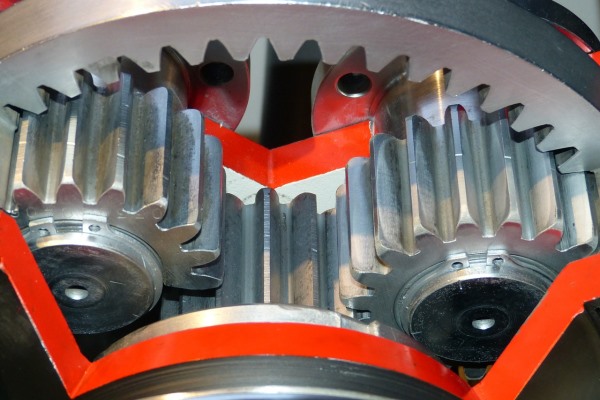Getting Caught

Have you ever tried to rip an old towel into rags and after straining without success, had to go looking for scissors? You've just witnessed a safe demonstration of the strength of some of today's fabrics.
But thousands of workers aren't so lucky. Those who have gotten clothing caught in moving parts of a machine know that even if they had the strength to rip the material free, they never would have had time to prevent injury to themselves. Your hand can be pulled around a pulley in a fraction of a second.
Loose clothing, ties, jewelry and even human hair have become caught in machinery and caused horrific, often fatal injuries like these:
- A worker adjusting a backhoe's brakes got his jacket caught in a driveshaft and broke his neck.
- In another instance a worker's dangling neck jewelry became entangled in moving gear. He had strung a piece of piano wire through his necklace so nobody could rip it off his neck. When the necklace became tangled, the worker was decapitated.
According to the Bureau of Labor Statistics, 189 workers in the United States died in 1997 after becoming caught in running equipment. The greatest toll occurred in the manufacturing industry.
Here are some tips for those working around equipment capable of entrapping parts of their bodies:
- Jewelry, especially dangling pieces such as neck chains or bracelets, should never be worn around moving equipment. There's not only a danger of being drawn into moving parts, but also of electrocution.
- Stuffing long hair under a collar or cap isn't good enough. It can work free and become entangled in equipment. Wear a hair net, or get your hair cut short.
- Report all moving parts that are exposed and pose a danger.
- Focus on the job and always be aware of the possibility of becoming entangled in moving machinery. Follow lockout/tagout procedures before performing any maintenance, adjustments or attempting to free jammed materials. Machine guards must always be replaced.
- Good housekeeping is a must. Imagine tripping over something you've left on the floor and rushing headlong into disaster.
- Is there enough light so people can see danger lurking?
- Never reach or step across moving equipment.
Anyone working around machinery needs to be properly trained about the potential hazards and what to do if a safeguard is missing, damaged or doesn't provide enough protection. They must also wear personal protective equipment such as goggles to prevent injuries from items such as flying wood and metal fragments or splashed fluids.
